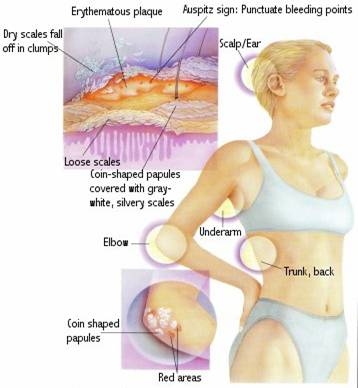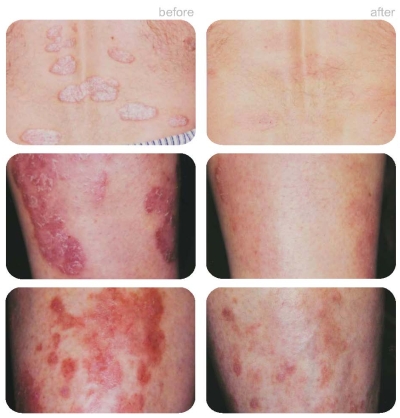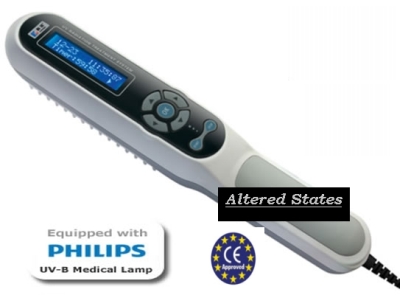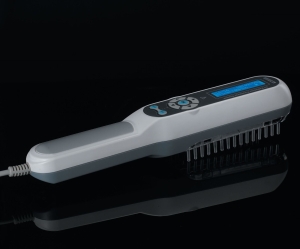
In Greek mythology, Helios was the god
of the Sun, the charioteer who drove the Sun across the
sky each day. Hippocrates was a great advocate of the
Sun’s healing properties. Although heliotherapy
traditionally refers to treatments that use natural sunlight,
the term is also applied to artificial sources of ultraviolet,
visible or infrared light radiation.

In the Third Century, A.D., the triumph
of Christianity put an end to the practice of sunbathing
throughout most of Europe. For over a thousand years
thereafter the use of sunbathing was restricted almost
entirely to the Jews and Arabians. The Christians called
sunbathing a sin and placed it on a par with the other
practices of the Hygienic System.
From the late 1800s, heliotherapy
- sometimes called phototherapy - became a
key part of certain treatment regimes for tuberculosis,
notably tuberculosis of the bones, joints and
skin, as prolonged exposure to sunlight can
kill the bacteria which cause the disease.
Infected children who were sent out to special
homes and hospital retreats were encouraged
to spend as much time outdoors as possible.
These children had often come from dark and
dingy city slums and exposing their skin to
sunshine raised their levels of vitamin D,
which also helped them fight the bacteria. |
In 1903, Niels Ryberg Finsen was awarded
the Nobel Prize “in recognition of his contribution
to the treatment of diseases, especially lupus vulgaris,
with concentrated light radiation, whereby he has opened
a new avenue for medical science.” Finsen discovered
that UV radiation was beneficial in treating lupus vulgaris,
a skin condition caused by Mycobacterium tuberculosis.
UV radiation was the only effective treatment against
tubercle bacilli in the skin before the introduction
of antituberculous chemotherapy in the 1950s.68,69 Finsen
believed that UV radiation killed Mycobacterium tuberculosis.

Lack of sunlight,
and diseases related to it
Breast cancer
Colon cancer
Diabetes
Elevated blood pressure
Heart disease
Multiple sclerosis
Ovarian cancer
Osteomalacia
Osteoporosis
Prostate cancer
Psoriasis
Rickets
Seasonal Affective Disorder
Tooth decay
Tuberculosis

Throughout the earth the growth of plant
and animal life is dependent upon the presence of sunshine.
We find that life is always most prolific in the tropics
where there is an abundance of year around sunshine and
where the intensity of the sun's rays is the greatest.
In the arctic regions where there is a scarcity of sunshine
life is scarce or absent altogether. Then, as we go south
and the climate gradually becomes warmer, all kinds of
life becomes more prolific; in the equatorial regions
it reaches its peak. Also, it is to be noted that the
plants and animals are usually more highly developed
where the climate is warmer.
More than 400 independent
clinical studies around the world* have shown
that Narrowband Phototherapy lamps are also the
most effective lamps currently available for
the treatment of Psoriasis and Vitiligo, as well
as other less common skin diseases,Psoriasis
- Narrowband UVB light treatment provide faster
clearing, less sun burning, and more complete
disease resolution than traditional UVB . |
The Danish scientist, Thorwald Madsen,
found that, just as the best physical development is
attained in the tropics so also do the people of the
temperate zone attain the best health during the summer
months when there is an abundance of sunshine. Madsen
based his conclusions upon his studies of a 37-year compilation
of Danish medical records. These records are unusually
complete because in Denmark the law requires that every
physician report every case of infectious disease which
he treats. The statistics provided by Madsen show that
disease, particularly infectious disease, occurs most
frequently during the season in which the people get
the least sunshine. Diphtheria, Bronchitis, bronchi-pneumonia
and tonsillitis all run up to a peak in the winter months
and fall into insignificance during July and August.
Taking an average of all disease, February was found
to be the month most conducive to the development of
disease; September was the best month from the standpoint
of public health. The conclusion is inescapable. The
prevalence of disease corresponds to the amount and intensity
of the sunshine. The more sunshine, the less disease;
the less sunshine, the more disease.
DID
YOU KNOW THAT?
Dermatologists use heliotherapy
for the treatment of acne, psoriasis and other
skin disorders.
Heliotherapy is a chiropractic
treatment used for muscular stimulation and relaxation.
Heliotherapy is the only know cure
for Seasonal Affective Disorder, a cyclic mood
disorder caused by sun deprivation during fall
and winter months.
Currently, AIDS research clinics
use heliotherapy as an effective took for boosting
the body's immune system.
Heliotherapy used in hospital operation
rooms reduces bacteria count by as much as 50%.
As a result, patients have been found to recover
faster and have fewer post-operative infections.
Scientists at the Baylor University
Medical Center have successfully used heliotherapy
to destroy the AIDS virus and other infectious
diseases and are developing heliotherapy to decontaminate
blood transfusions.
Heliotherapy is practied in Cancer
Research Institutes for successful DNA repair.
Within hours of light treatments, the cancer
cells begin to die, leaving the normal tissue
unharmed. 70% to 80% of the tumors treated responded
positively after just one treatment.
Heliotherapy is used as an effective
tool for irradiating the blood of cancer patients.
The maternity wards of most major
hospitals use heliotherapy for the treatment
of hyperbilrubinemia (neonatal jaundice), a condition
found in over 60% of prematurely born infants.
While fully reconizing that long
term overexposure to the sun and burning can
result in skin cancer, premature aging and wrinkling
in some cases, the science of heliotherapy supports
that the sun also offers many benefits.
Warning
over 'epidemic’ of
skin allergies from chemical in cosmetics and
household products
|

In the treatment of wounds which do not
heal, sunshine is of the greatest importance. In World
War I thousands of German soldiers were afflicted with
deep wounds which simply would not heal in spite of the
most adequate medical attention. Month after month the
wounds continued to fester, matter and infect the entire
body. It was left to Bernhard of Samden, an old surgeon
who gave up the use of the knife for sunbathing, to help
these unfortunate soldiers. He took the Fourth German
Army Corps first, and before the war was over he was
sunning the supposedly incurable wounds of nearly the
whole German army. His success was little short of phenomenal.
The most severe wounds, which had failed to respond to
any type of medial antiseptics or disinfectants, rapidly
healed under the influence of sunshine. The infection
quickly ceased, and the tissues quickly closed and healed
as if by magic. No better demonstration of the superiority
of the hygienic care of infected wounds through the use
of sunshine could have been given.
The first epidemiological
research suggesting that vitamin D from sun exposure
has a protective effect against colon cancer
was published in the International Journal of
Epidemiology in 1 980 by Drs Frank and Cedric
Garland (see
Table 3). They looked at the geographic distribution
of cancer deaths in the United States and found
that mortality from colon cancer decreased in
areas of the United States with greater sun exposure,
the number of deaths in the industrialized northeast
of the United States being one third higher than
in sunnier regions such as Hawaii, New Mexico
and Arizona. Migration to a sunny latitude — from,
say, New York to Florida — is associated
with a decreased risk of colon cancer. Also,
a childhood and adolescence spent in one of the
world's sunnier regions reduces the risk of the
disease for those who migrate in the opposite
direction, and the protective effect appears
to last a lifetime.
|
Dr. E. Amsted, an associate of Dr. Rollier,
reports remarkable success in treating rickets with sunshine,
and another sun-doctor, Riedel, has used sunshine successfully
in treating post- osteomalacia fractures of the neck
of the femur, which had failed to heal in a year's time.
The simple application of sunshine brought about speedy
recovery. The fracture healed perfectly with good ossification.

"There have been a number of reports of sunlight
being used on cancer patients to good effect but,
unfortunately, much that has been published on the
subject is largely anecdotal. One form of cancer
which clearly benefits from sunlight exposure is,
ironically, a form of skin cancer. This is the rare
malignant skin cancer mycosis fungoides which has
been treated very successfully with the sun's rays.
The results of a study carried out at a clinic in
Davos, Switzerland, reported in the journal Hautarzt
in 1986, showed that the majority of patients with
this serious condition who underwent sunlight therapy
in the Alps went into remission — some for
over a year.
As far as internal cancers are concerned, few physicians
seem to have actually used sunlight therapeutically.
One notable exception is the American physician Dr
Zane Kime. In his book, Sunlight Could Save Your Life,
which was published in 1980, Dr Kime describes how
he encouraged one of his patients with breast cancer
to sunbathe. He took this rather unusual step following
a consultation with a 41-year-old woman whose breast
cancer had spread to her lungs and bones. She had already
undergone a mastectomy and chemotherapy but to no avail.
Dr Kime did not treat the cancer directly but, instead,
introduced a programme to improve the general health
of his patient. She was only allowed to eat whole foods,
and all of the refined polyunsaturated oils and fats
were removed from her diet. She was also encouraged
to spend time sunbathing; and the combination of diet
and sunlight seems to have achieved remarkable results.
Within a few months the patient was back at work and
in the years that followed there were no apparent symptoms
of her metastasized cancer. Unfortunately Dr Kime did
not devote much of his book to this episode, nor did
he state how many years of remission his patient enjoyed
and, sadly, Dr Kime died in 1992.
Some years before Dr Kime's apparent success, a study
into the effects of sunlight on cancer was carried
out at the Bellevue Medical Centre in New York. During
the summer of 1959, fifteen patients diagnosed with
cancer were encouraged to arrange their own sunlight
therapy. They spent as much time as they could outdoors
without glasses, and especially sunglasses. They were
also instructed to avoid artificial light sources and
television sets as much as possible. Dr John Ott, who
is a renowned investigator of the effects of light
on health and is probably the greatest innovator in
the field since Niels Finsen, was involved in this
project. It was Doctor Ott who first alerted the American
public of the hazards to health posed by the emission
of X-ray radiation from television sets, and he also
developed some of the first full-spectrum lighting.
He says in his book Health and Light that the results
of the study of the effects of sunlight on cancer patients
were sufficiently positive to justify a more detailed
programme of research, but that support was not forthcoming"

|
When diseases involving the kidneys exist
sunbathing is of special value. Rollier treated several
cases of renal disease with sunshine and reports good
results. In the most severe cases recovery was not complete
but the patients lived much longer than could otherwise
have been expected. The patients who started the sun
treatments before the disease was too far advanced experienced
complete recovery. The explanation generally given for
the healing power of sunshine upon the kidneys is that,
by warming the skin, an extra supply of blood produces
a vascularization which is seven times greater than normal.
This concentration of blood, or hyper anemia as it is
called technically, lasts for two full hours after the
sunbath, and it is primarily responsible for the beneficial
effect exerted upon the kidneys. The extra supply of
blood undoubtedly speeds the eliminative processes which
are necessary for recovery.
In 1 989 the Drs Garland,
together with Dr Edward Gorham, published the
first ever epidemiological work on the relationship
between sun exposure and breast cancer (see
Table 4). Their research demonstrated that,
as in the case of colon cancer, there was a strong
negative correlation between available sunlight
and breast cancer death rates. The chances of
women from areas of the United States with less
available sunlight dying of breast cancer were
40 per cent higher than those of women who lived
in Hawaii or Florida. Worldwide, the lowest rates
for breast and colon cancer occur in the Caribbean,
South and Central America, North Africa and South
Asia. Countries in these regions are within 20
degrees of the equator, where the sun's rays
are particularly strong, and where mortality
rates for breast and colon cancer are 4-6 times
lower than in northern Europe or North America.
|
The skin particularly is benefited by sunbathing.
The well-bronzed skin is firm and strong but at the same
time it possesses a soft, velvety texture. It is usually
free from pimples and blemishes of all kinds. In addition,
the sun has a tendency to smooth the skin and remove
small wrinkles. It is indeed a prerequisite to greater
beauty.
|
Vitiligo - Narrowband UVB
lights are proving to be very useful in the treatment
of Vitiligo. Narrowband UVB light treatment is
replacing traditional PUVA phototherapy treatment.
UVB narrowband lamps for vitiligo require no
photo-sensitizing agents |
Medical authorities list literally dozens
of skin diseases which commonly afflict civilized races.
It is well to note that he unclad primitive races are
usually free from this whole assortment. Travelers who
observed and lived among the early North American Indians
reported that they suffered from virtually no skin diseases.
This was no doubt due in part to the better diet they
employed but the fact that they wore very little clothing
and lived much of their time in the open air and sunshine
deserves much credit. Source

UVB phototherapy
Modern Day Sun Therapy
We encounter UVB every day when exposing
our skin to the sun, without even knowing that it has
a particularly good influence on our health. It is now
a well-known fact that UVB literally cures psoriasis,
retarding the diseased cells tanks to its penetrative
capabilities. Modern psoriasis treatment widely uses
UVB lamps with great success.

Present in natural sunlight, UVB is an
effective treatment for psoriasis. UVB penetrates the
skin and slows the growth of affected skin cells. Treatment
involves exposing the skin to an artificial UVB light
source for a set length of time on a regular schedule.
This treatment is administered in a medical setting or
at home.

Heliotherapy
and Narrow-band UVB
Improve Vitamin D Balance
There are two types of UVB treatment, broad
band and narrow band. The major difference between them
is that narrow band UVB light bulbs release a smaller
range of ultraviolet light. Narrow-band UVB is similar
to broad-band UVB in many ways. Several studies indicate
that narrow-band UVB clears psoriasis faster and produces
longer remissions than broad-band UVB. It also may be
effective with fewer treatments per week than broad-band
UVB.
Narrowband ) lamps have a precise and unique
spectral energy distribution with an emission peak at
311 nm that minimizes potential side effects like redness
and itching. Also, a shorter period of exposure is needed.
More effect, less discomfort
Most of the positive effects of solar radiation
are mediated via ultraviolet-B (UVB) induced production
of vitamin D in skin. However, several other pathways
may exist for the action of ultraviolet (UV) radiation
on humans.There is also evidence that exposure to some
frequencies of light (UV in particular) causes the body
to release small amounts of endorphins, which would explain
the benefit for some disorders such as SAD, as endorphins
are often called "the body's own morphine"..

Psoriasis, Vitiligo,
Eczema, Atopic Dermatitis
Several human skin diseases, like psoriasis,
vitiligo, atopic dermatitis and localized scleroderma,
can be treated with solar radiation (heliotherapy) or
artificial UV radiation (phototherapy). UV exposure can
suppress the clinical symptoms of multiple sclerosis
independently of vitamin D synthesis. Furthermore, UV
generates nitric oxide (NO), which may reduce blood pressure
and generally improve cardiovascular health. UVA-induced
NO may also have antimicrobial effects and furthermore,
act as a neurotransmitter. Finally, UV exposure may improve
mood through the release of endorphins.Source

This a lamp with a spectrum similar to
that of daylight. It is suitable for heliotherapy.

Each day, Apollo’s fiery chariot
makes its way across the sky, bringing life-giving light
to the planet. For the ancient Greeks and Romans, Apollo
was the god of medicine and healing as well as of sun
and light.

UVB Lamp Narrowband Lamp
It should be apparent that using a UVB
lamp is really a very simple matter. It doesn't call
for any special climates, supervision or rituals. No
matter where you live you can enjoy the advantages of
the healing frequency of sunshine with little or no inconvenience.
And you don't have to worry about the danger of sunbathing
either. There isn't any if you the simple instructions.
Just start taking your UVB gradually and work up . This
is a fundamental thing to remember. By progressing gradually
you will gain the fullest advantages of UVB.
PRODUCT DETAILS
Product Features
1. Light source :UV
2.Small size, light wight and convenient
to handle.
3.Reasonable price,easy operation.
4.Comb design,can take the treatment of scalp.as well
5.Additional reflectors designed to improve the radiation efficiency.
Light source UVB lamp
Output wave 311nm
Working voltage
AC230V±10% / AC110v ±10%
Rated power 50VA
Fuse protector
Working Condition Temp:5~40°C
Effective Distance 3CM
Treatment Area 48cm2±2%
Weight 1.6KG
 |
TheUVB Lamp uses
the original Philips™ UV-B/311nm narrowband lamps
with a specific wavelength similar to that of the
sun’s natural spectrum in treating eczema,
hyperbilirubin, psoriasis, vitiligo,plus many other
Lack of Sun related Problems and diseases.
It is designed for home use,
but may
come
in handy for Alternative health ,dermatologists and
medical clinics.
|
|
UVB Lamp Goggles
|
Richard Hobday, taken from his book, The
Healing Sun
If psoriasis moves
into the joints, a painful condition known as psoriatric
arthritis occurs. This condition is recognized by sore,
stiff joints accompanying the skin breakouts. Symptoms
range from mild to severe, with patients experiencing
progressive joint damage and deformation in the most
serious cases. |

